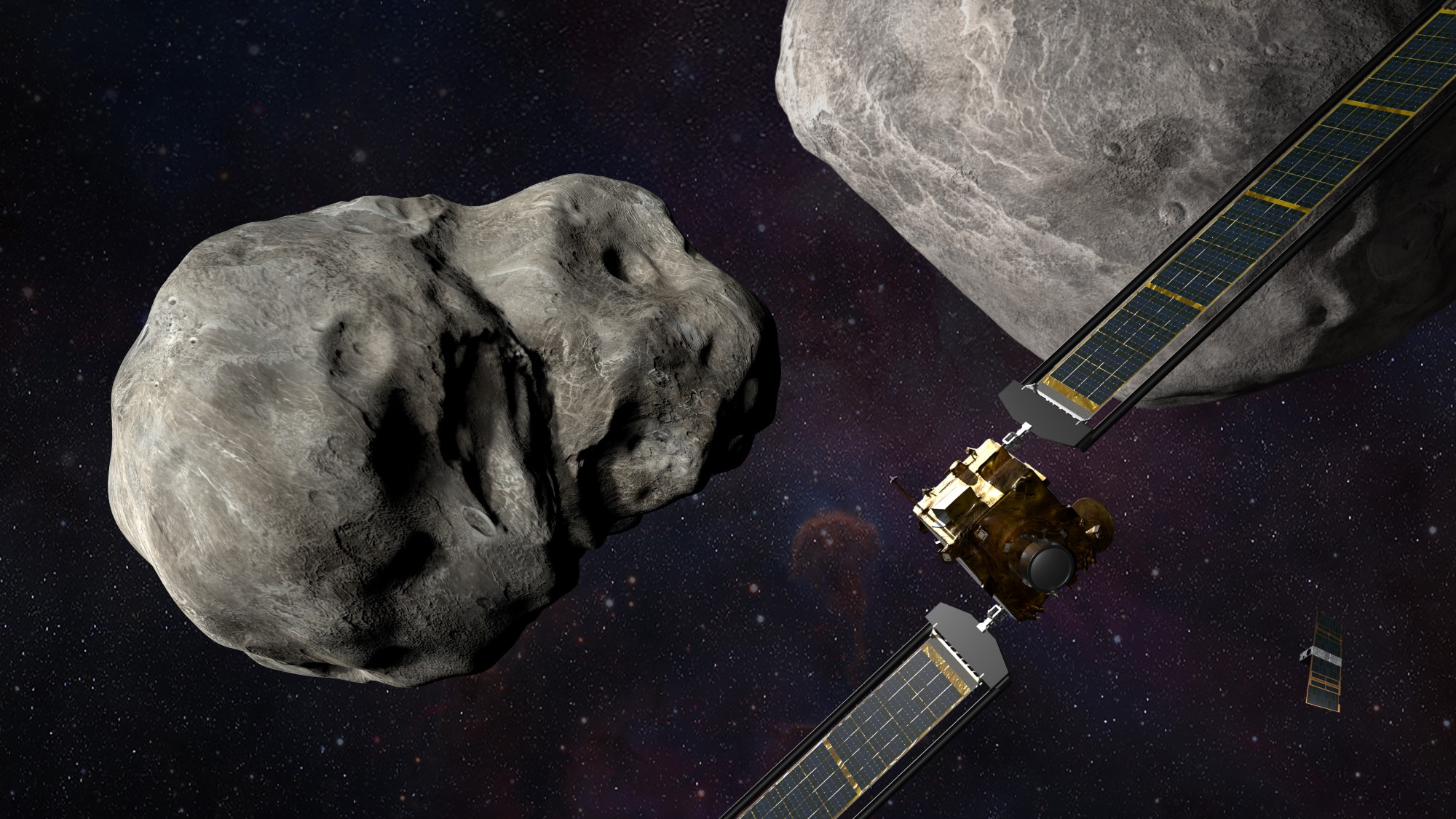NASA's asteroid-deflecting test mission is just 1 month away from impact
No, this isn't a sci-fi film.

We're just one month out from impact — impact of NASA's DART spacecraft into an asteroid, that is.
Managed by the Johns Hopkins Applied Physics Laboratory (APL) in Maryland for NASA, the Double Asteroid Redirection Test (DART) mission is the first-ever planetary defense test. On Sept. 26 at 7:14 p.m. EDT (2314 GMT), the DART spacecraft will crash into the asteroid Dimorphos at approximately 15,000 mph (24,000 kph) in an attempt to alter the celestial body's trajectory around a larger asteroid called Didymos.
Although Dimorphos is not on a collision course with Earth, the mission is a test to see if "kinetic impact technology" would work to deflect any potential Earth-bound asteroids.
Related: NASA's DART asteroid-impact mission explained in pictures
The mission launched on a SpaceX Falcon 9 rocket on Nov. 24, 2021. Since then, DART has traveled roughly 6.8 million miles (11 million kilometers) to the binary asteroid system Didymos. Didymos is the larger asteroid at 2,500 feet (780 meters) in diameter, while Dimorphos is the smaller "moonlet" asteroid at 525 feet (160 m) in diameter. For comparison, the asteroid that powerfully exploded over Chelyabinsk, Russia, in 2013 was 60 feet (18 m) in diameter.
The choice of targeting a binary system was intentional. Because the two asteroids revolve around one another — and they both can be observed by Earth-based telescopes — we'll quickly be able to see if the DART spacecraft's impact shifted Dimorphos' orbit.
Members of the public will be able to view live coverage of the impact on NASA TV, NASA's website, and NASA social media pages beginning at 6 p.m. EDT (2200 GMT) on Sept. 26.
Get the Space.com Newsletter
Breaking space news, the latest updates on rocket launches, skywatching events and more!
However, don't expect to see live video of the impact itself. Although DART is equipped with the Reconnaissance and Asteroid Camera for Optical Navigation (DRACO) camera, that instrument is used to autonomously navigate the spacecraft to Dimorphos, as well as photograph the asteroid's surface as DART approaches. But the impact will cut off the camera's data feed when it destroys the spacecraft.
However, the mission does include the Italian Space Agency's Light Italian CubeSat for Imaging of Asteroids (LICIACube) tagging along for the ride. Before impact, DART will jettison LICIACube, which will more slowly fly by Dimorphos to photograph the impact and its, well, impact on the Didymos binary system.
In about four years, however, the European Space Agency's Hera mission will rendezvous with Didymos and Dimorphos to study DART's impact in detail.
But that's still a long way down the road. For now, we'll just be bracing for next month's impact.
Follow Stefanie Waldek on Twitter @StefanieWaldek. Follow us on Twitter @Spacedotcom and on Facebook.
Join our Space Forums to keep talking space on the latest missions, night sky and more! And if you have a news tip, correction or comment, let us know at: community@space.com.

Space.com contributing writer Stefanie Waldek is a self-taught space nerd and aviation geek who is passionate about all things spaceflight and astronomy. With a background in travel and design journalism, as well as a Bachelor of Arts degree from New York University, she specializes in the budding space tourism industry and Earth-based astrotourism. In her free time, you can find her watching rocket launches or looking up at the stars, wondering what is out there. Learn more about her work at www.stefaniewaldek.com.









